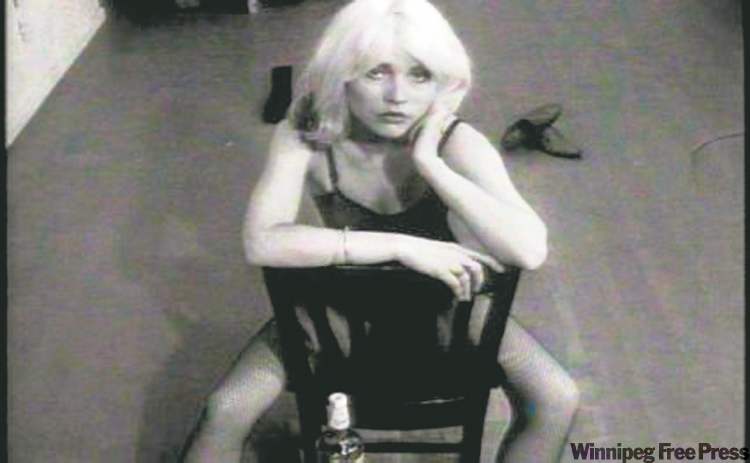Punk passion fuelled NYC filmmaking scene
Advertisement
Read this article for free:
or
Already have an account? Log in here »
To continue reading, please subscribe:
Monthly Digital Subscription
$0 for the first 4 weeks*
- Enjoy unlimited reading on winnipegfreepress.com
- Read the E-Edition, our digital replica newspaper
- Access News Break, our award-winning app
- Play interactive puzzles
*No charge for 4 weeks then price increases to the regular rate of $19.00 plus GST every four weeks. Offer available to new and qualified returning subscribers only. Cancel any time.
Monthly Digital Subscription
$4.75/week*
- Enjoy unlimited reading on winnipegfreepress.com
- Read the E-Edition, our digital replica newspaper
- Access News Break, our award-winning app
- Play interactive puzzles
*Billed as $19 plus GST every four weeks. Cancel any time.
To continue reading, please subscribe:
Add Free Press access to your Brandon Sun subscription for only an additional
$1 for the first 4 weeks*
*Your next subscription payment will increase by $1.00 and you will be charged $16.99 plus GST for four weeks. After four weeks, your payment will increase to $23.99 plus GST every four weeks.
Read unlimited articles for free today:
or
Already have an account? Log in here »
Hey there, time traveller!
This article was published 06/10/2011 (5144 days ago), so information in it may no longer be current.
Debbie Harry before Blondie.
Steve Buscemi before the Coens.
Loopy performance artist-actress Ann Magnuson. Rough-sex symbol Lydia Lunch. The unflappable filmmaker Jim Jarmusch.

They all lived in or circulated through bombed-out sections of New York’s East Village in the ’70s and early ’80s like the cast of the coolest-ever disaster movie. And they are all present to bear witness to their sordid artistic adventures in Blank City, a documentary that explores the era’s DIY “No Wave” film scene.
The cinema movement depicted by French documentarian Celine Danhier proceeded in lockstep with the punk music scene with the same criteria… there weren’t any criteria. A cheap Super 8 camera (readily available from a sketchy local merchant) helped, but a passion to create movies on your own terms pretty much constituted membership to the club.
The punk sensibility applied to the attitude of the films, which tended to be angry, radical and/or nihilistic. Eighteen years before the destruction of the World Trade Center, filmmaker Lizzie Borden and a film crew accessed the top of one of the towers to place a prop time bomb in her radical-feminist pseudo-documentary Born in Flames. In the face of mainstream complacency, some filmmakers such as Nick Zedd and Richard Kern doubled down with their Cinema of Transgression movement, incorporating rough sex and rougher violence into their films, which found a lucrative outlet in the burgeoning home-video market.
It’s the kind of stuff that should naturally repel any kind of nostalgic attitude. But nostalgia worms its way in anyway. It’s funny how elder punk types can now talk about hangouts like CBGB and Max’s Kansas City in the same wistful way a jazz aficionado might recall the glory days of Birdland or the Roseland Ballroom.
Sometimes, the sheer joy of the era is evident: witness Buscemi talking about attending screenings of art films with his fellow firemen, or John Waters gleefully delivering the dish on his friend, no-wave star Cookie Mueller, and his status as drug dealer to filmmaker Rainer Werner Fassbinder.
There is a sense of tragedy and lost potential, of course. The HIV virus was especially devastating to this population. (The typically delightful Ann Magnuson is the only one of the interviewees to lose her cool, recalling how friends and her own brother were systematically felled by AIDS.)
As for the films produced by the movement, it is debatable if Amos Poe’s Blank Generation, Zedd’s They Eat Scum or Kern’s Fingered qualify as landmark works as much as snapshots of the era. Of all the filmmakers interviewed in the film, only Jarmusch had any staying power. (Even in his earliest films, such as Strangers in Paradise, his sense of style and composition is striking.)
Since Hollywood’s attempt to bottle the lightning of the East Village scene was Chris Columbus’s sanitized 2005 interpretation of the musical Rent, Danhier’s doc stands both as a legitimate document and as a necessary corrective.
randall.king@freepress.mb.ca
Other voices
Selected excerpts from reviews of Blank City.
As maddeningly undisciplined as the movie community she’s exploring, but it still stands as a worthy historical document of NYC’s recent past and the birth of a new way of making films.
— Linda Barnard, Toronto Star
This doc is interesting and worthy, but it is unlikely to send you seeking most of the films sampled in it. That was then, this is now, and it was fun while it lasted.
— Roger Ebert, Chicago Sun Times
Above all, the film is a poignant valentine to an era when artists could afford to live and work on the island of Manhattan, the cultural ferment goosed by their low-rent lifestyle.
— Sam Adams, Los Angeles Times
Celine Danhier’s vivid documentary recreates the dangerous energy of New York City in the late ’70s and early ’80s.
— Norman Wilner, Now magazine
The juxtaposition between the studiously aging talking heads and their bleakly youthful counterparts is often jarring.
— Joseph Jon Lanthier, Slant magazine
The fabled downtown Manhattan avant-filmmaking scene of yore gets its due in this passionate chronicle of cinematic rebellion.
— Chris Barsanti, Film Journal International
— Compiled by Shane Minkin
MOVIE REVIEW
Blank City
Cinematheque
Directed by Celine Danhier
14A
94 minutes
3 1/2 stars out of five

In a way, Randall King was born into the entertainment beat.
Our newsroom depends on a growing audience of readers to power our journalism. If you are not a paid reader, please consider becoming a subscriber.
Our newsroom depends on its audience of readers to power our journalism. Thank you for your support.


